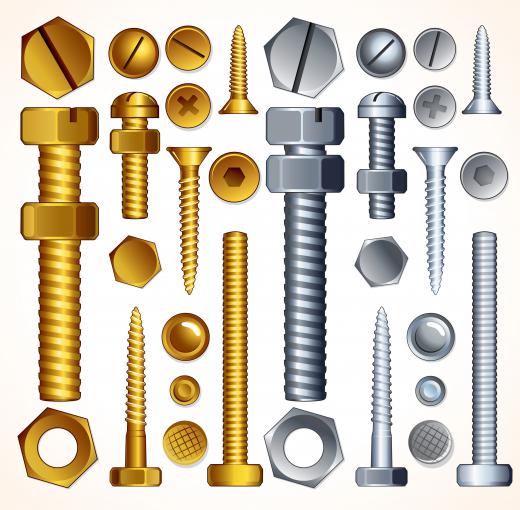Threaded fasteners are commonly used to attach and secure two or more objects together. While very effective, a threaded connection can loosen over time due to reasons such as vibration, temperature cycling, and wear. A lock washer is a type of fastener that is used to prevent a joint which is secured using threaded fasteners from coming loose and separating. Lock washers are available in several different types and sizes, such as split lock washers, star lock washers, and tab lock washers. These are used extensively in the manufacture of airplanes, and in numerous structural applications where loosening of connections could have significant safety implications.
Threaded connections between two or more objects typically involve the use of a screw, or bolt and a nut. Lock washers are used for threaded connections using a screw and nut combination. The screw has a large head on one end and a shaft with an external thread, which is a helical structure that allows the screw to be advanced when rotated. The nut, which is usually hexagonal in shape, has a hole with an internal thread that matches the thread of the screw.

When a screw is inserted and rotated into a nut, the screw advances. A significant force can be generated when the screw and nut are tightened against two or more objects located between the screw head and nut surfaces. A lock washer is placed between the nut and surface being secured or joined. It resists the force being applied by the nut and prevents the nut from loosening.
A split lock washer has a donut shape — a circle with a hole in the center — and has a single cut which extends from the outside diameter to the inside hole. The cut is the reason this type of washer is called a split lock washer. The two sections adjacent to the cut are misaligned in the direction perpendicular to the washer surface. This misalignment allows the lock washer to resist force by creating friction through resulting spring action that prevents the nut from loosening.
In addition to resisting force through friction, the shape of certain types of lock washers can cause them to bite into the mating surface and create a mechanical grabbing force. Star lock washers have internal and external teeth, and each adjacent tooth is bent in alternating directions perpendicular to the washer surface. The teeth bent to one side embed themselves into the nut, while the teeth bent in the opposite direction embed themselves into the work surface being fastened. Similarly, tab lock washers have bent tabs at the edges that mate with the surface of the nut, and lock the nut in place.
